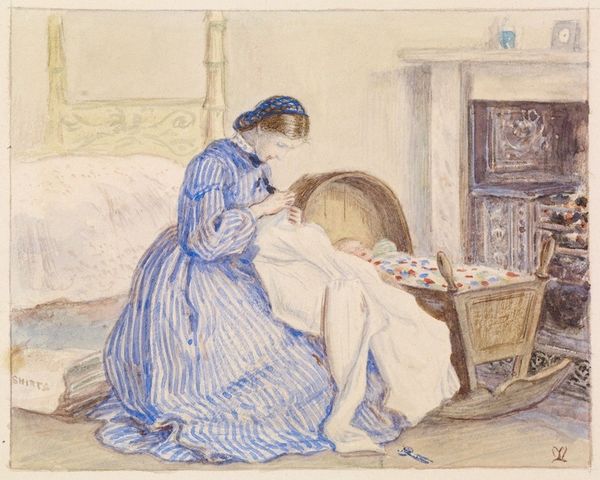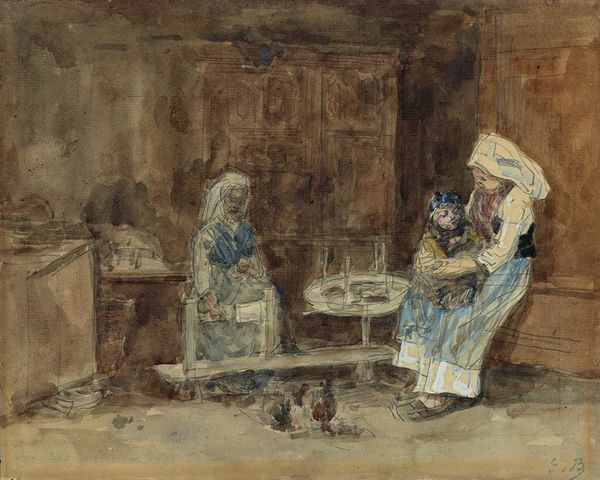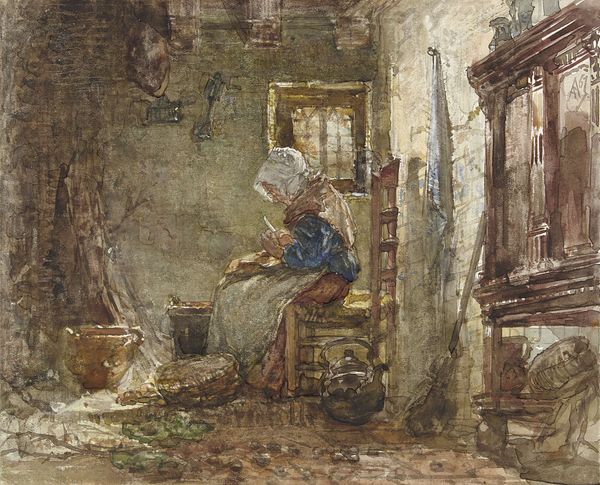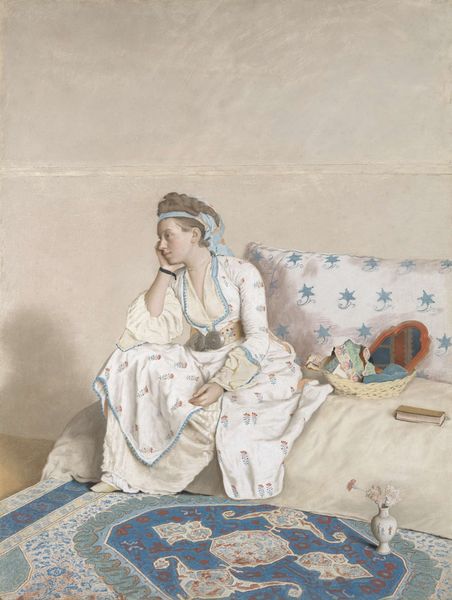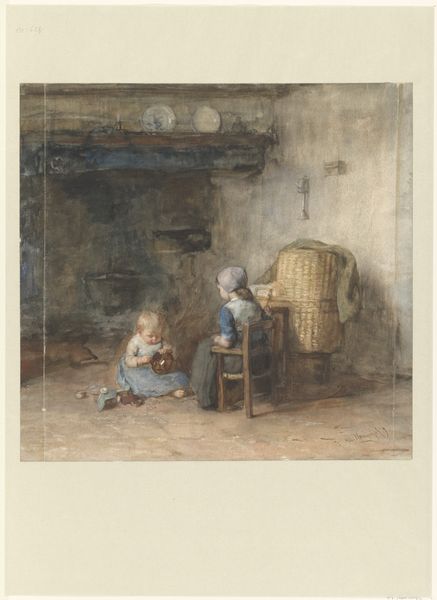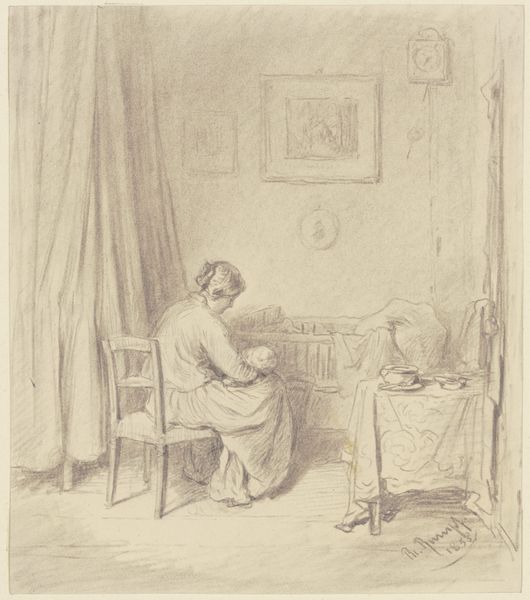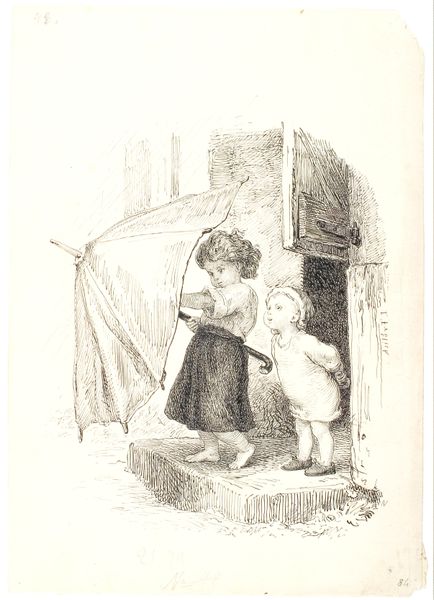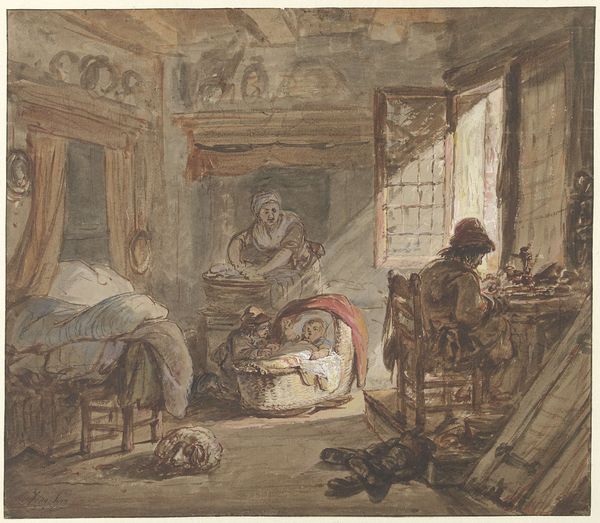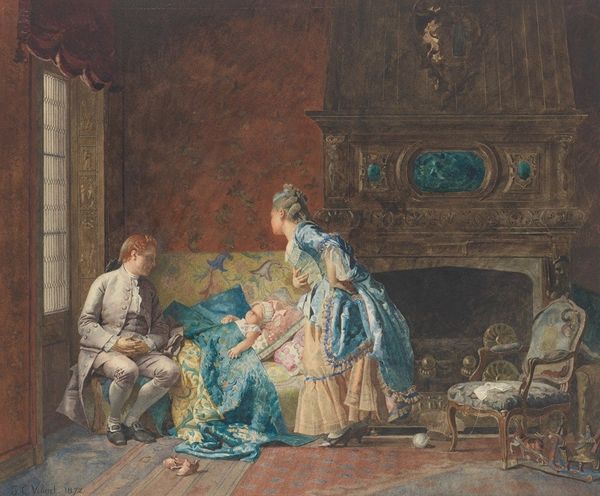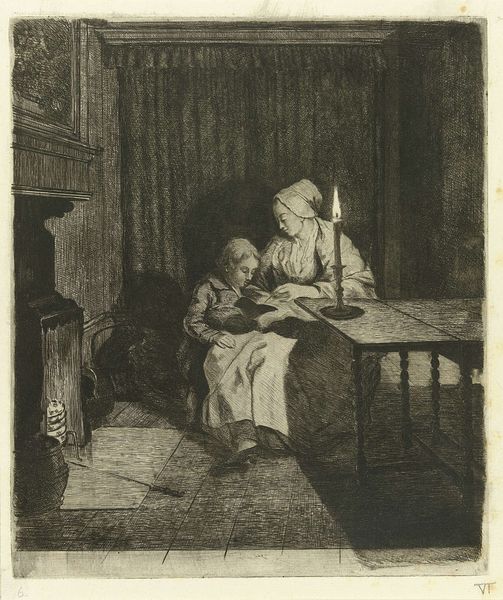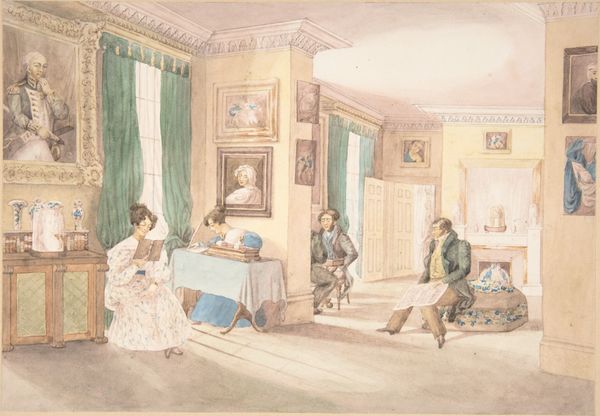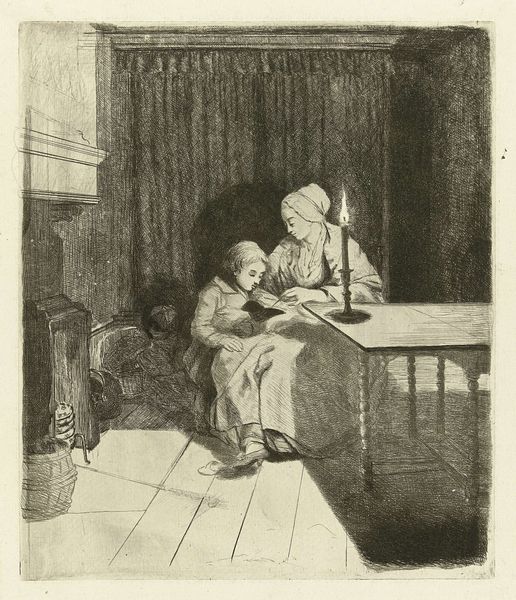
Dimensions: support: 302 x 375 mm
Copyright: CC-BY-NC-ND 4.0 DEED, Photo: Tate
Editor: This is John Frederick Lewis's watercolor, *An Interior*, housed at the Tate. I’m struck by how the fallen frames contrast with the woman’s composed posture. What compositional elements stand out to you? Curator: The painting’s internal framing is paramount. Note how Lewis employs both explicit and implied lines to compartmentalize the scene. The ornate cabinet, for instance, acts as a visual anchor, its dark mass balanced by the lighter, more fluid draperies. Editor: So, it’s all about the formal relationships? Curator: Precisely. Consider the interplay of textures and the chromatic orchestration—the muted golds against the vibrant reds and blues. Ask yourself: how do these elements contribute to the overall visual experience? Editor: I see now; it’s less about what it depicts and more about how it's put together. Curator: Yes, and the careful arrangement allows us to decode the artwork’s intrinsic structure, rather than simply its subject.
Comments
Join the conversation
Join millions of artists and users on Artera today and experience the ultimate creative platform.
tate 7 months ago
⋮
In this work Lewis has set out to show his skill in rendering different textures and effects of brilliant colour: the model is carefully posed and she is surrounded by a rich variety of studio props. The pigments are vigorously worked; highlights have been created by scratching the paper. This picture is a good example of how some nineteenth-century watercolourists looked for ways of rivalling oil painting techniques. Lewis was one of the most successful painters in this style having started as an oil painter. Here, to the left, he has included a painting of a Venetian scene by R.P.Bonington: this shows Lewis paying homage to a brilliant artist who died when only twenty-six. Gallery label, September 2004
